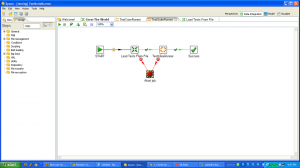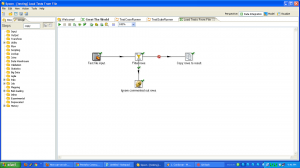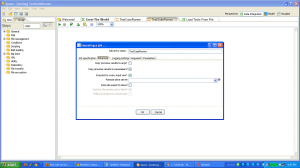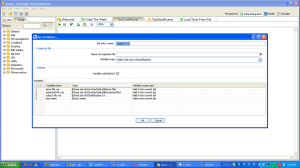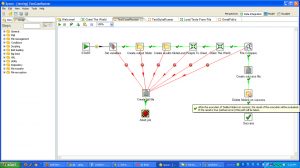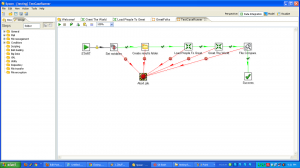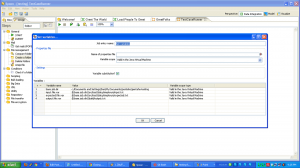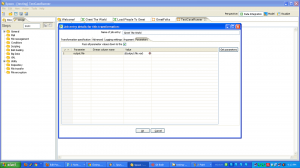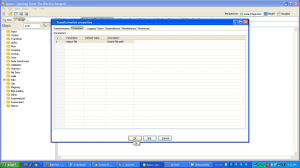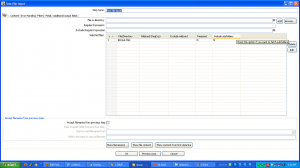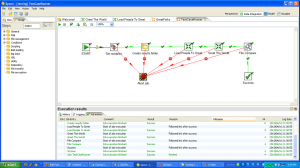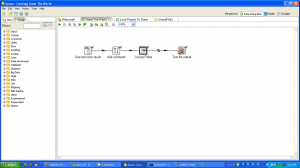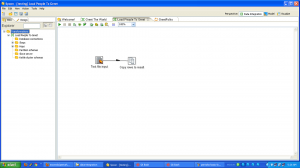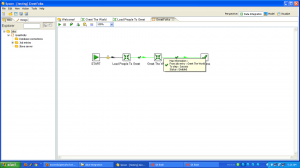I read Startup Communities by Brad Feld a few months ago. I found it to be interesting even for me–someone who is only on the periphery of the VC/startup community in Boulder. I especially enjoyed his first chapter, where he examined the startup history of Boulder, from StorageTek to Celestial Seasonings.
I cut my teeth working as an employee of a startup in Boulder, XOR. We were a consulting company, and I was able to watch, fresh out of college and wet behind the ears, as we went from a small profitable company of 60 to a VC funded agglomeration of 500 employees spread across the country, and through some of the layoffs and consolidation.
I was talking to another XOR employee who co-founded the company I currently work for about companies that spun out of XOR, and thought it’d be fun to collect a list.
To make this list, you have to meet the following criteria:
- founded by someone who worked at XOR
- had at least one employee or two founders–I started a sole proprietorship myself, but it is hard to distinguish between freelancing (which is hard, but not as hard as a company) and a one person company
To make the list, a company does not have to still be alive nor profitable–I’m interested in the failures as well as the successes. In addition, it doesn’t matter if the founding happened a few years or jobs after the person worked at XOR–again, I’m interested in lineage, not in direct causation.
Here are the companies I know (including XOR founders where known–there may have been other founders not listed). In no particular order…
- Adigio: Dion Almaer and Kris Thompson
- Applied Trust: Ned McClain and Trent Hein
- 6 Kites: Herb Morreale
- NewGuard: Ray Thompson and Dean Rizzuto
- Kalos Strategy: Herb Morreale
- Inversoft: Brian Pontarelli
- 8z Real Estate: Anthony Francavilla and Lane Hornung
- Culture Foundry: Hans Bjordahl and Trevor Dodd
- Twomile Information Services: Corey Snipes
- Zia Consulting: Mike Mahon, Jeff Barry, Pat Myers
- Adeptive Software: Bryan Buus, Herb Morreale, Trent Hein
- Cry Baby Design: Erika Hutchings
- Alpha Cube Designs: Pawan Vora
- Inovdesigns: Bill Pawlak
- HungryMind: Jeff Lindermeier and Hank Pantier
- Spotlight Inc: Chris Smaldone
- Clearwater Solutions: David Skinner, Ken Keelan
- End To End Solutions: Jeff Stewart
- Set Direction: Dion Almaer
- 303Cycling: Kris Thompson, David Kutcipal
- Loon Lake Investments: Herb Morreale
- Topplers: Herb Morreale
- Triple Threat Digital: Elisabeth Bowman
- On & On Creative (now Commerce Kitchen): Stacia Synnestvedt
- Brain Buddy: David Skinner
- Axion Health: David Skinner
- CarbonLogic: Chris Bianco
- Smart Search Marketing: Patricia Hursh
If you know one that is not listed, please contact me and I’ll add your suggestion.
